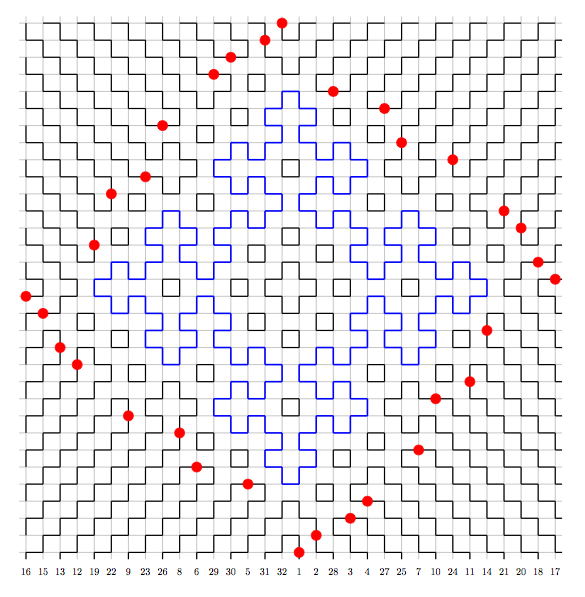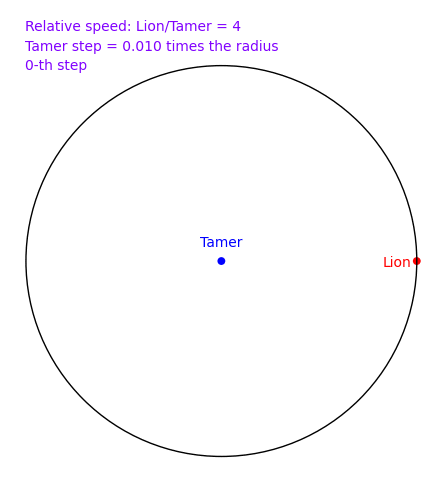Writing object oriented code in Python
20 janvier 2011 | Catégories: sage | View CommentsI am currently at Sage Days 28. Right now, there is a discussion about Analytic combinatorics in Sage and the new code written by Alex Raichev at tikcet #10519 was mentionned in the discussion. His code is a bunch of def python functions in a sage file. In Sage, code is written in object oriented way.
I am not an expert of the domain of analytic combinatorics, but I am coding oriented object Python since some time now. So I wrote a comment on the ticket gathering my thoughts to, I hope, help Alex to rewrite his set of functions into an oriented object structure. I copied the content of my comment below as it will be easier to share it.
Writing object oriented code : Finding the objects
How to structure a bunch of functions into classes? How to find which objects (python classes) you need? Here is the trick I personaly use. Consider each of your functions as a question you ask. Then, ask yourself to who are you asking each of your questions? Answers often gives you a good hint about the objects you need to implement. EXAMPLE. Suppose I code the function determinant. Question : To who do I ask the determinant?. Answer: To a matrix. Hence, matrix might be a good object (a python class) to implement.
You are the best person to answer to these questions. You might have 30 functions in your file, but only two or three different answers to the above question. Regroup the similar functions together: they will become the methods of a same class.
The sage file you uploaded starts with:
r""" [...] This code relates to analytic combinatorics. More specifically, it is a collection of functions designed to compute asymptotics of Maclaurin coefficients of certain classes of multivariate generating functions. The main function asymptotics() returns the first `N` terms of the asymptotic expansion of the Maclaurin coefficients `F_{n\alpha}` of the multivariate meromorphic function `F=G/H` as `n\to\infty`. It assumes that `F` is holomorphic in a neighborhood of the origin, that `H` is a polynomial, and that asymptotics in the direction of `\alpha` (a tuple of positive integers) are controlled by smooth or multiple points. [...] """
Reading only these lines, I imagine the following structure:
class HolomorphicMultivariateMeromorphicFunction(object): # Constructor of the object def __init__(self, F, G): #stores important information on the object as attributes of self self._F = F self._G = G def maclaurin_coefficients(self, n, alpha): r""" Return the maclaurin coefficients of self. INPUT: - ``alpha`` - tuple of positive integers OUTPUT: a python list of the first terms OR maybe an object of a class you implement if there exists pertinent questions to ask to it. """ #Do some computations based (I guess) on self._F and self._G intermediate_result1 = self.some_intermediate_computations_1() #Do more computations return something def asymptotics(self, N, alpha): r""" Returns the asymptotics of Maclaurin coefficients. """ #Do some computations based (I guess) on self._F and self._G intermediate_result2 = self.some_intermediate_computations_2() intermediate_result3 = self.some_intermediate_computations_3() return something #put here all the others functions needed to compute the asymptotics def some_intermediate_computations_1(self): pass def some_intermediate_computations_2(self): pass def some_intermediate_computations_3(self): pass ...
It also looks like you need some robustness somehow. But I need to know more information about what means
"that asymptotics in the direction of \(\alpha\) (a tuple of positive integers) are controlled by smooth or multiple points."
to decide whether this is checked at the creation of the object or before returning the asymptotics. But these hypothesis should be checked somewhere.
Hope this helps.
Cheers,
Sébastien Labbé, Montréal, (but currently at Sage Days 28, Orsay, France)
How to contribute to Sage talk at Sage Days 28
19 janvier 2011 | Catégories: sage | View CommentsAt Sage Days 28 held this week in Orsay, France, I gave a talk on How to contribute to Sage.
The talk goes into the details because we wanted people to contribute during the talk. Tickets created during the talk are here :
Sharing my branch of Sage development
19 novembre 2010 | Catégories: sage | View CommentsThe purpose of this text also available on the Sage wiki is to explain how to share your branch of Sage development. I am sure there more than one way to do so, but the solution shown here is the same as the way Sage Combinat shares its development.
First, clone the sage-main. Below, I use my sage trac username to name that branch, because it's my branch of Sage development:
sage -b main sage -clone slabbe
Go to the directory associated to that new branch and initialize the Queue for Mercurial. See Sage Development Manual : Mercurial queues for more details.
cd SAGE_HOME/devel/sage-slabbe hg qinit
This last step created a new directory (SAGE_HOME/devel/sage-slabbe/.hg/patches) where your patches will be saved. In order to share your branch, you simply need to share this directory. For example, you can copy its content to a public directory on your web site. You can also use svn, git or any other revision control system. As I want to work on my branch the exact same way as I am working on the sage-combinat branch, I choose to use hg.
Now I log on the server that will host my patches, I create the (public) patches directory and I initialize that directory as an hg directory:
ssh username@server.com mkdir patches cd patches hg init
I also add a hook to that public repository so that it updates itself automatically when a push is made to it. In other words, I edit the file ~/patches/.hg/hgrc so that it becomes:
#file ~/patches/.hg/hgrc [hooks] changegroup = hg update
I then logout from the server and go to the patches directory on my machine and make a clone of the public patches repository created above. I could use the http adress, but I use the ssh one so that I can push to the server later on:
cd SAGE_HOME/devel/sage-slabbe/.hg/patches hg clone ssh://username@server.com:~/patches .
Like for the Sage-combinat repository, I create in .hg/patches a file called .hgignore containing the following:
# file .hgignore syntax: glob status guards
Then, add, commit and push this first change to the server:
hg add .hgignore hg commit -m "Added the .hgignore file" hg push
I can now create patches on my branch like in sage-combinat:
cd SAGE_HOME/devel/sage-slabbe/ hg qnew trac_XXXX-fixing-stuff.patch vim sage/combinat/partition.py hg qrefresh -e
I can push my changes to my public server like in sage-combinat:
cd SAGE_HOME/devel/sage-slabbe/.hg/patches hg st hg commit hg push
For the first time, you may need to add the series file as well:
cd SAGE_HOME/devel/sage-slabbe/.hg/patches hg add series hg commit hg push
Last thing, notice that the sage-combinat script can be used to install your branch on any Sage installation with the following one liner:
sage -combinat install -b slabbe -s http://server.com/path/to/your/username/patches/
In my case, the result is here
Fibonacci Tiles can appear in a fully packed loop diagram
22 octobre 2010 | Catégories: sage, fibonacci tile | View CommentsA Fibonacci Tile appearing in the fully packed loop diagram of the permutation \([16,15,13,12,19,22,9,23,26,8,6,29,30,5,31,32,1,2,28,3,4,27,25,7,10,24,11,14,21,20,18,17]\).

Done with Franco Saliola.
The Tamer and the Lion (done with Xavier Provençal)
20 novembre 2009 | Catégories: animation, sage | View CommentsA tamer wants to escape within a circle without being eaten by a lion who lives on the circle. The speed of the lion is 4 times that of the tamer. How can the tamer escape? There is a nice and clever solution in 2d, but does the naive solution where the tamer always moves oppositely to the lion works? In November 2009, a small script written in Sage by Xavier Provençal and Sébastien Labbé in Montpellier answers the question. To create the animation, download the script tamer.sage and run the commands:
sage: load tamer.sage sage: l = range(0,1200,10) sage: a = anime(l) sage: a Animation with 120 frames sage: show(a)

How can the tamer escape? Can you find the solution?
« Previous Page -- Next Page »
